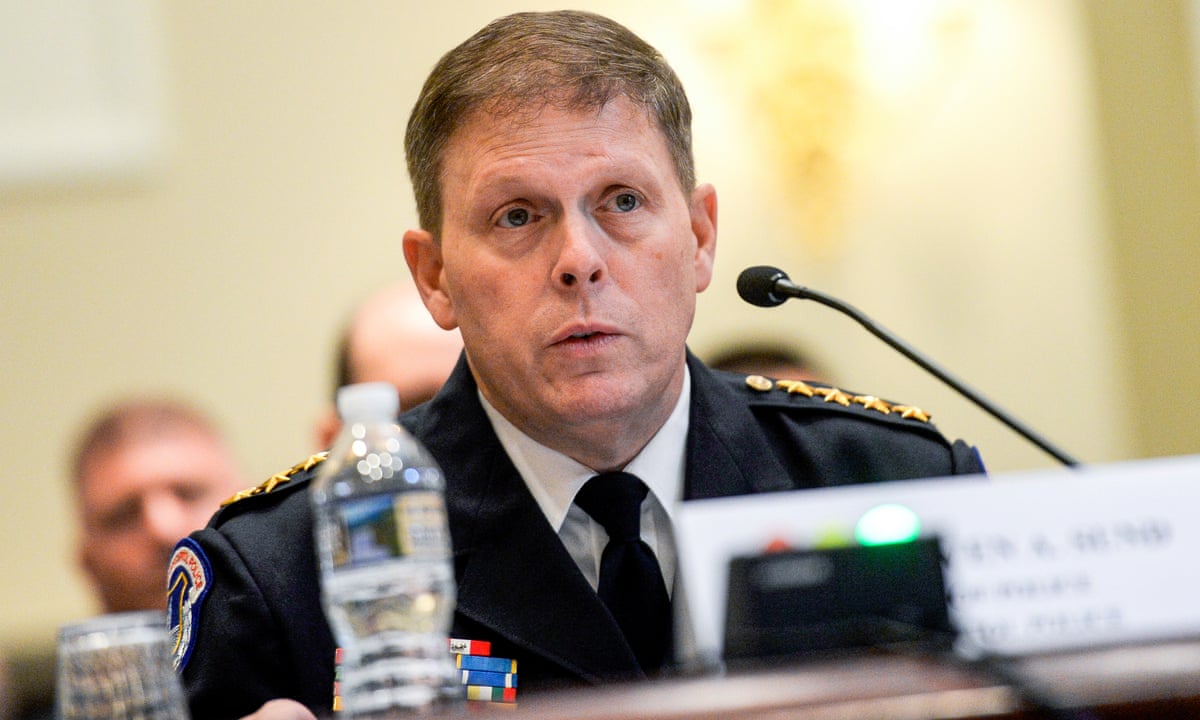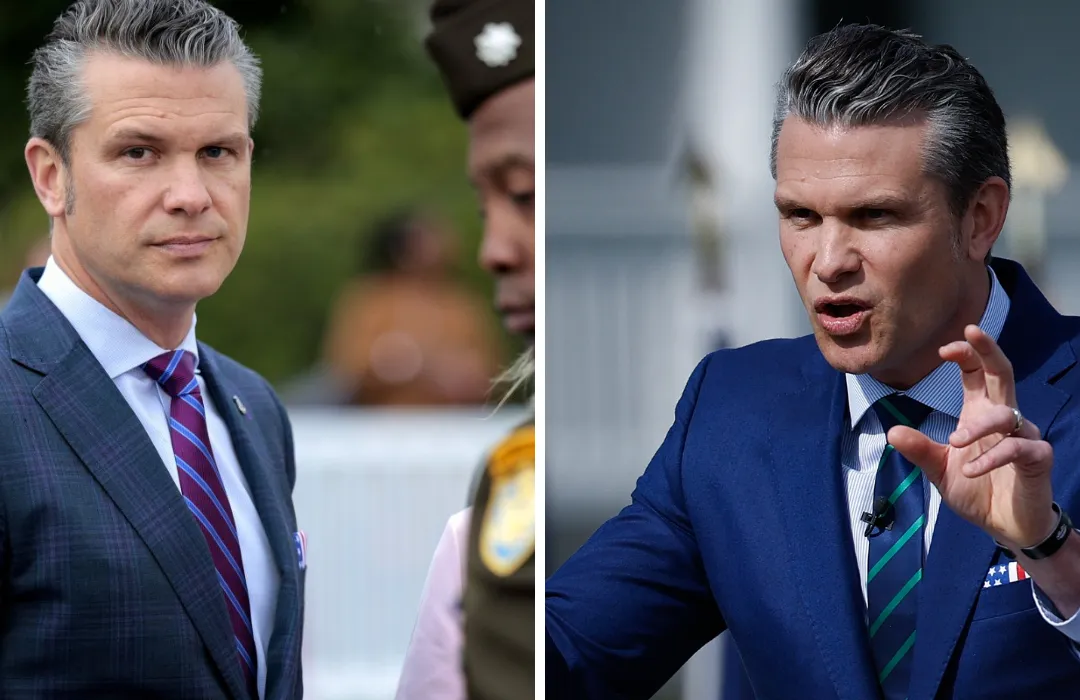The January 6, 2021 attack on the United States Capitol remains one of the most scrutinized and controversial events in recent American history. In the years since, competing narratives have emerged over what federal agencies knew in advance, how much information was shared, and what preparations were made by law enforcement.
Now, new revelations from the former chief of the U.S. Capitol Police add a dramatic new layer to the story, raising fresh questions about the FBI’s role, transparency, and communication during that chaotic day.
In a Friday interview with John Fawcett on “The Great America Show,” former Capitol Police Chief Steven Sund disclosed that he was never informed that hundreds of FBI agents were embedded within the protest crowds that gathered on January 6.
His comments came just one day after reports surfaced indicating that 274 plainclothes FBI agents were deployed in Washington, D.C. that day — a number far higher than previously acknowledged.
The disclosure has stunned observers, not only for its scale but also for the contradiction it presents to earlier government statements. The Department of Justice’s Office of Inspector General had previously declared that there was no evidence of undercover FBI personnel present at the Capitol.
FBI Director Christopher Wray himself testified in 2023 that he did not believe undercover agents were on scene. Sund’s comments suggest otherwise, and they highlight the ongoing bureaucratic dysfunction that, according to him, crippled the police response.
According to Sund, the FBI never shared with him or his command staff that such a significant number of agents were embedded in the crowd. He explained that had he known of such a deployment, protocol would have dictated that a liaison officer be assigned to his command center.
“If you’re going to have that type of assets and resources deployed onto someone’s jurisdiction, you’re going to put somebody in their command center. That’s key,” he said.

But no such liaison was ever assigned. Instead, Sund described a situation in which critical information was siloed within agencies and withheld from his direct oversight.
“The only problem with the Capitol is the bureaucracy,” he remarked. “Even though, as the Chief of Police, there was a chief law enforcement officer for the House and a chief law enforcement officer for the Senate that sat over top of me. That created the big bureaucracy that I ran into. You’d like to think the chief could call the shots, especially with my experience? Not the case on January 6th.”
Sund’s comments reflect a broader frustration with the structure of the U.S. Capitol Police. Unlike other jurisdictions, the Capitol Police are overseen by both chambers of Congress, which appoint chief law enforcement officers for the House and Senate.
This unusual arrangement often results in divided authority and slow decision-making. Sund argued that this bureaucratic setup was partly to blame for the inadequate response on January 6.
“It’s like no other jurisdiction in the world,” Sund explained. “They really need to fix that.” His words underscore the ongoing debate about how much autonomy the Capitol Police should have and whether structural reforms are needed to prevent future failures.
The revelation of 274 FBI agents embedded in the crowd directly contradicts statements previously made by government officials. In December 2024, the Justice Department’s Office of Inspector General released an 88-page report stating, “We found no evidence in the materials we reviewed or the testimony we received showing or suggesting that the FBI had undercover employees in the various protest crowds, or at the Capitol, on January 6.”
Similarly, FBI Director Christopher Wray told Congress in July 2023, “I’m not sure there were undercover agents on scene. As I sit here right now, I do not believe there were undercover agents on.”

These denials stand in stark contrast to the figure now being reported, and they raise serious questions about whether the FBI misled lawmakers, withheld critical information, or simply chose to obscure its operational details.
A senior congressional source attempted to downplay the news, noting that the FBI routinely deploys countersurveillance personnel at large public events. However, the source admitted that given the bureau’s longstanding refusal to reveal the scope of its presence, skepticism was inevitable.
This was not the first time Sund has spoken about critical information that failed to reach his desk. In February 2021 testimony before the Senate Rules and Homeland Security committees, he revealed that he never received a January 5 FBI report warning of potential violence on the following day.
Although the Capitol Police technically received the report, it never advanced to Sund’s office. Instead, a Capitol Police officer assigned to the FBI’s Joint Terrorism Task Force received the intelligence and passed it to the department’s Intelligence Division. From there, the document stalled and never reached the top of the chain of command.
Sund has argued that this failure to communicate, compounded by the bureaucracy of congressional oversight, left the Capitol Police unprepared for the scale of violence that erupted on January 6.
The attack on the Capitol shocked the world, as thousands of protesters surged past barricades and forced lawmakers to flee the chambers. The riot resulted in multiple deaths, hundreds of injuries, and widespread damage. In the aftermath, critics zeroed in on security failures, asking why warnings of potential violence had not been acted upon.
Sund’s latest revelations add to the narrative of missed opportunities and poor communication. If indeed 274 FBI agents were embedded in the crowd, why was this information withheld from the very law enforcement leader responsible for protecting the Capitol? And if the FBI had such a significant presence, what intelligence, if any, did those agents gather and report during the unfolding chaos?
The political implications of these revelations are profound. For Republicans, the news bolsters claims that the FBI has not been transparent about its role in the January 6 events. For Democrats, it raises uncomfortable questions about why intelligence was not properly shared with those on the ground.
Former House Speaker Nancy Pelosi had previously claimed that neither then-President Trump nor anyone else requested National Guard support ahead of January 6, a claim that has since been challenged.
Combined with the new disclosures, the episode paints a picture of a chaotic and poorly coordinated security apparatus at the highest levels of government.
In his interview, Sund expressed palpable frustration at the lack of control he had over his own jurisdiction. “You’d like to think the chief could call the shots,” he said. “Especially with my experience. Not the case on January 6th.”
His comments resonate with many observers who argue that the Capitol Police’s unusual structure — where the chief is effectively subordinate to political appointees in Congress — created vulnerabilities that were exposed on January 6.
Calls for reform have grown louder, with advocates urging that the police be granted more independence and direct authority to act in times of crisis.
The revelations raise pressing questions that demand answers: Why did the FBI deny having agents on the ground when so many were reportedly present? Why was this information withheld from the Capitol Police chief?
What role did those agents play, and what intelligence did they provide? And perhaps most importantly, how can systemic failures in communication and oversight be corrected to prevent another tragedy?
While some may argue that the FBI’s deployment of plainclothes agents was a routine security measure, the failure to disclose this presence to the Capitol Police chief suggests deeper problems.

For Sund, the issue is not simply about numbers but about the fundamental lack of coordination among agencies tasked with protecting one of the nation’s most important institutions.
Four years after the attack, the story of January 6 is still being written. The latest disclosures serve as a reminder that many details remain hidden or contested, and the search for accountability is far from over.
For Sund, the events of that day remain a painful lesson in how bureaucracy and miscommunication can have catastrophic consequences.
His remarks underscore the need for clarity, transparency, and reform. Without those changes, he warns, the Capitol could remain vulnerable in future crises. “It’s like no other jurisdiction in the world,” he said. “They really need to fix that.”





